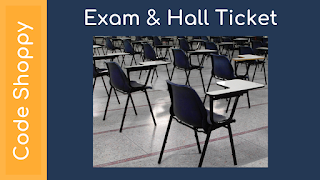Activity Recognition Based on Deep Learning and Android Software
Deep learning has been highly concerned by scientific research institutions and industry since it wasborn in 2006. Initially, the application of deep learning was mainly in the field of image and speech. Since 2011, researchers from Google research institute and Microsoft research have applied deep learning to speech recognition, resulting in a reduction of recognition error rate by 20%-30%. In 2012, IIya Sutskever and Alex Krizhevsky, students from Jeffrey hinton, used deep learning to beat the Google team in ImageNet, which reduced the error rate of image recognition by 14%. In June 2012, Google chief architect Jeff Dean and Stanford professor AndrewNgled the famous GoogleBrain project, which used 160,000 cpus to build a deep neural network, and applied it to image and speech recognition, and finally achieved great success. In addition, deep learning has gained a lot of attention in the search field. Nowadays, deep learning has been widely used in image, speech, natural language processing, CTR estimation, big data feature extraction, etc.Code Shoppy
The revolution of deep learning has been starting in most of fields. Such as image recognition, speech recognition,signal processing, face recommendation and so on. With the system of deep learning algorithm, customs officials can complete face recognition automatically. Compared with recognizing artificially before, this method can reduce errors obviously. The limitation of manual operation is that human will be tired and easy to make mistakes. What’s more, it probably changes the method of input gradually. With the enthusiasm of deep learning research, various open source deep learning frameworks are also emerging, including Tensor Flow (TF), Caffe, Keras etc. As the most popular frameworks, TF is a relatively advanced machine learning library, which allows us to design neural network structures easily, without writing complex code by ourselves. At the same time,the good portability of TFand the diversity of interfaces are the main reason
Deep learning has been highly concerned by scientific research institutions and industry since it wasborn in 2006. Initially, the application of deep learning was mainly in the field of image and speech. Since 2011, researchers from Google research institute and Microsoft research have applied deep learning to speech recognition, resulting in a reduction of recognition error rate by 20%-30%. In 2012, IIya Sutskever and Alex Krizhevsky, students from Jeffrey hinton, used deep learning to beat the Google team in ImageNet, which reduced the error rate of image recognition by 14%. In June 2012, Google chief architect Jeff Dean and Stanford professor AndrewNgled the famous GoogleBrain project, which used 160,000 cpus to build a deep neural network, and applied it to image and speech recognition, and finally achieved great success. In addition, deep learning has gained a lot of attention in the search field. Nowadays, deep learning has been widely used in image, speech, natural language processing, CTR estimation, big data feature extraction, etc.Code Shoppy
The revolution of deep learning has been starting in most of fields. Such as image recognition, speech recognition,signal processing, face recommendation and so on. With the system of deep learning algorithm, customs officials can complete face recognition automatically. Compared with recognizing artificially before, this method can reduce errors obviously. The limitation of manual operation is that human will be tired and easy to make mistakes. What’s more, it probably changes the method of input gradually. With the enthusiasm of deep learning research, various open source deep learning frameworks are also emerging, including Tensor Flow (TF), Caffe, Keras etc. As the most popular frameworks, TF is a relatively advanced machine learning library, which allows us to design neural network structures easily, without writing complex code by ourselves. At the same time,the good portability of TFand the diversity of interfaces are the main reason
Deep learning really benefits us to a large extent. And with the development of society, people depend on mobile electronic products more, especially mobile phones. The artificial intelligence of mobile phones makes it so powerful that to achieve more functions, such as mobile payment, recording the number of steps, face detection and fingerprint identification, temperature sensing, etc. Thesefunctionsare inseparable with sensors. At present, a variety of built-in sensors of smart phones, such as accelerometers, gyroscopes, magnetometers, direction sensors, etc., can sense different movements, directions and external environments, especially when monitoring the movement and position of the device. Original 3D data [1].This project used the built-in sensorsof the mobile phone as the data input terminal, and the TF-based deep learning framework to implement recognition of people's activities byusing the model obtained through massive training as the core and Android application and mobile phone hardware.https://codeshoppy.com/php-projects-titles-topics.html
In conclusion, we can acquire the datathrough the mobile phone, then use the TF model that is transplanted to classify. At last,the probability of each activity is displayed on the mobile phone. In the future, we will continuously collect data to optimize the classification model in order to improve the accuracy of activity recognition. In addition, this project can be used in monitoring abnormal activities of the aged such as falling, or for calculating daily exercises. But in this project, the phone must have gyroscope or gravity sensor. It is necessary to consider applying this project into other phones by some sensors such as sports bracelets.The study of this experiment can be used as a stage step, and it can be used as a part of data monitoring in future research.

No comments:
Post a Comment